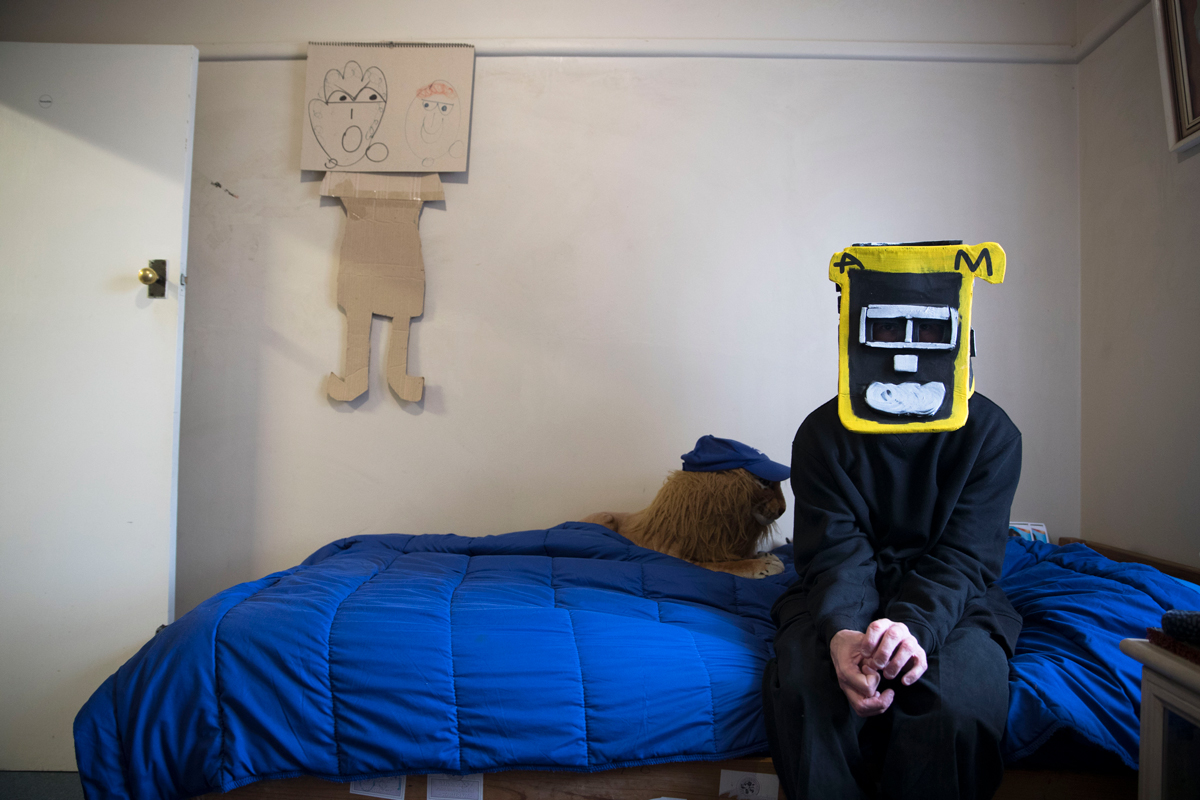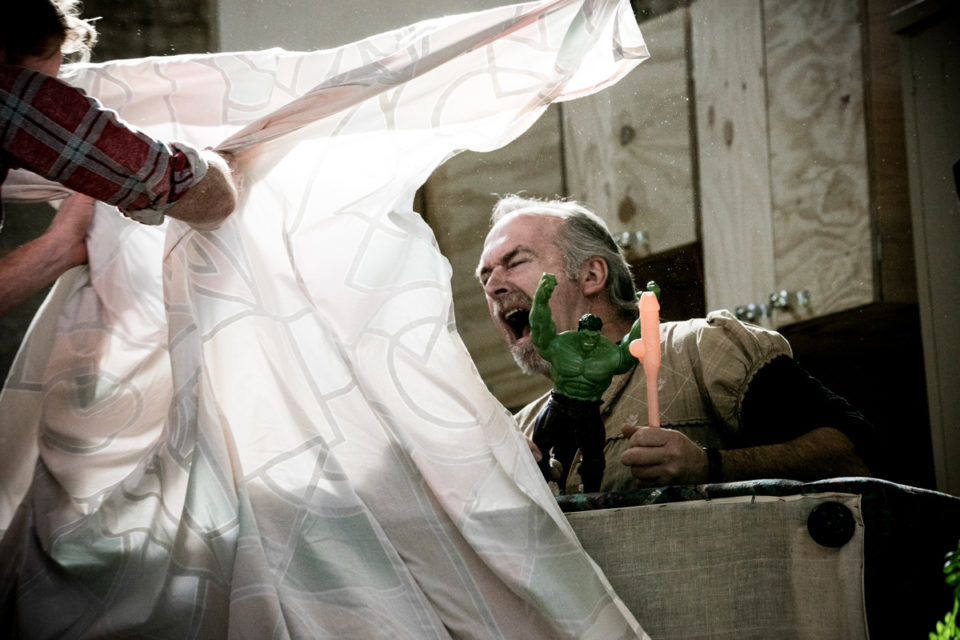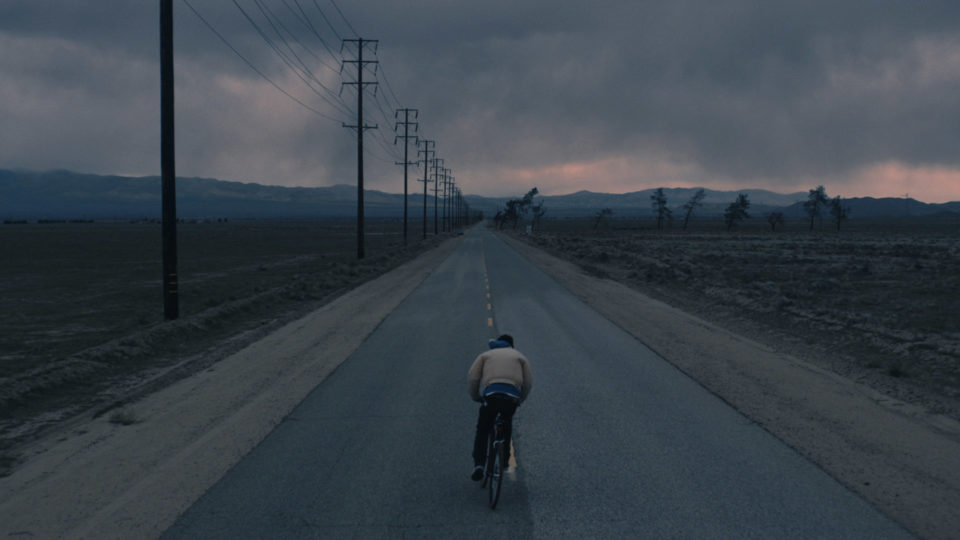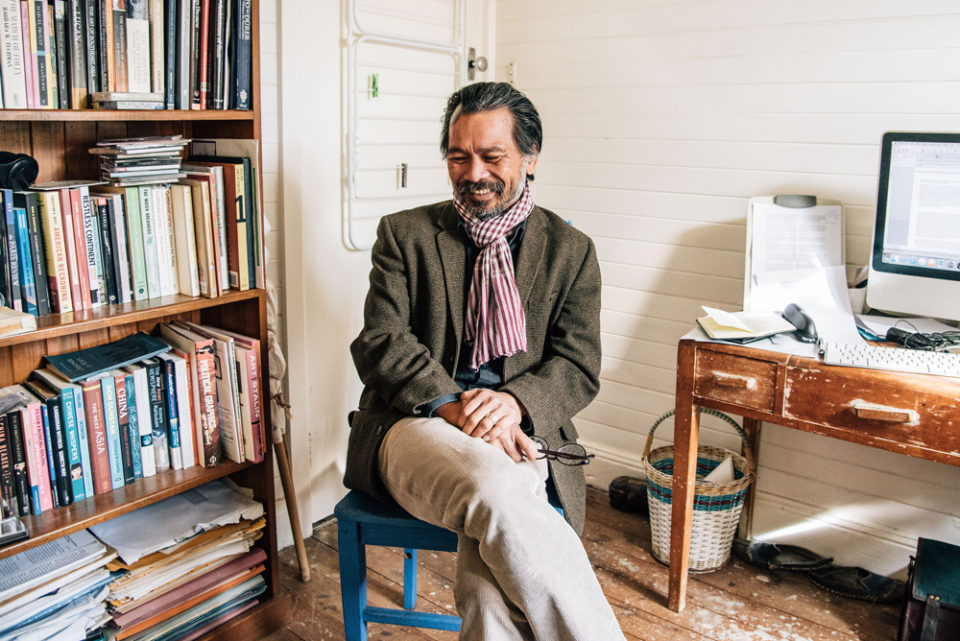What’s beneath the mask? There should be an obvious answer. Yet from the moment we work out how to hide our own face behind the painted caricatures of another, we are plagued by an uneasy feeling that the answer to the nature of personality is not so clear cut.
There’s something about the way a mask plasters over the liveliness of a human face with smiles that don’t change and eyes that don’t blink. We’re reminded, regardless of how intimately you know a person, that you can never know exactly what thoughts and feelings swirl beneath the surface. That’s intoxicating and that’s terrifying.
And that’s exactly what the masked beings of Birdfoxmonster, the latest collaboration between Studio A, Erth and Carriageworks, sink their teeth into.
Birdfoxmonster is an immersive dining experience in which three mask-wearing performance artists are transformed into bird (Meagan Pelham), fox (Skye Saxon) and monster (Thom Roberts). Its purpose isn’t so much narrative as interaction: a full-body immersion of sights and tastes and sounds that constitute the artists’ creative worlds.
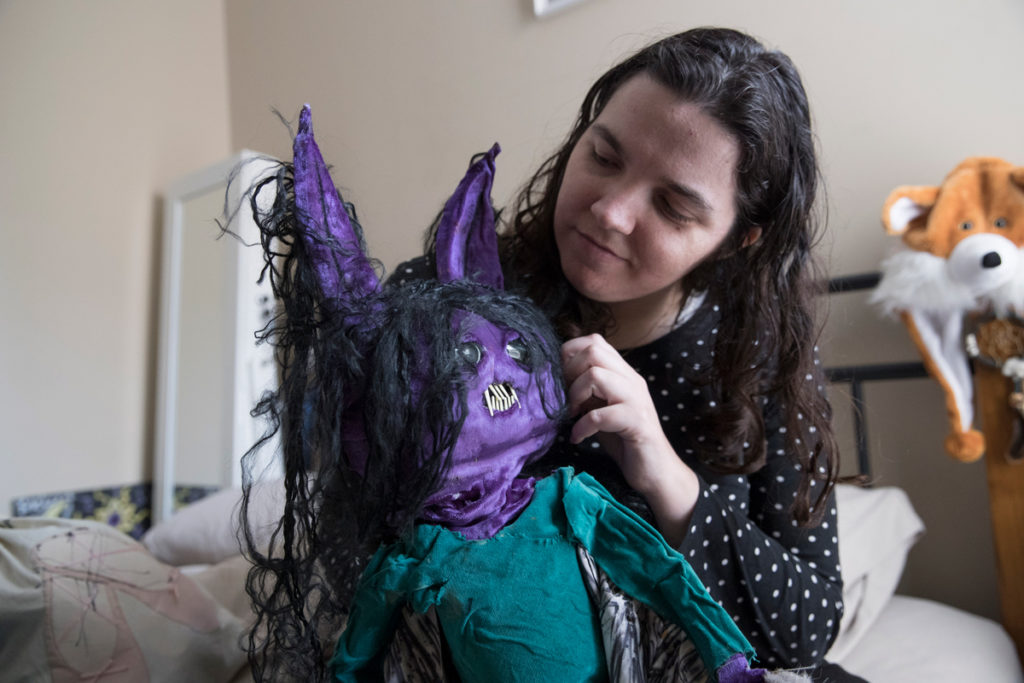
Skye Saxon is ‘Fox’. Photography by Lyndal Irons
The trio weave amongst you as you eat a carefully curated meal of their favourite foods from plates hand-painted with their signature artworks. They whisper softly in the shadows and toast to your good health. Digital projections of their drawings swirl and melt across the walls. The masks of lace and velvet and cardboard let the performers submerge themselves in their fiendish alter-egos, but they also obscure the fact that each is living with intellectual disability.
Gabrielle Mordy is the Artistic Director for Studio A, a performance company that provides support to artists with intellectual disabilities. “As soon as you tell someone that the person has an intellectual disability that’s all they hear and it becomes a one-dimensional understanding of who the person is and what the work is,” she says. “And, to be honest, there’s also an assumption that the work’s not going to be very good.”
“[We were] very aware of the social taboo that people with intellectual disability shouldn’t dwell within the darkness,” says Birdfoxmonster director Scott Wright. “I feel society judges too quickly and gets concerned that someone with an intellectual disability may have a psychotic episode or might be triggered by playing or delving into subject matter that is considered unacceptable. But some of the other guys at Studio A are totally into horror films. They love Freddy Krueger and they make comic books of horror movies … the mask kind of gives [them] permission.”
And the masks seem to have had a deeper psychological impact on the entire team behind Birdfoxmonster than first anticipated. “We’d actually been working on another project and … it felt like we were pushing shit uphill. And then suddenly we just put masks on and ran off into the bush late at night and this beautiful new work emerged out of it.”
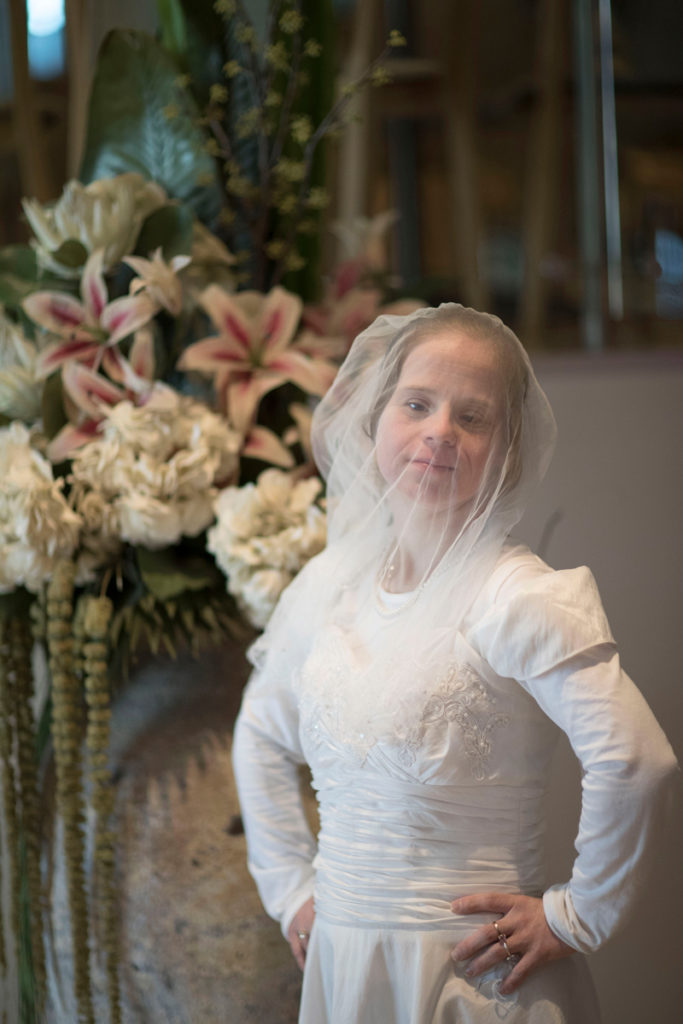
Meagan Pelham is ‘Bird’. Photography by Lyndal Irons
As the work evolved, the artists did too. Wright says they have become more confident and risk-taking.
The dramatic death of one character in the performance was the brainchild of Skye Saxon. When the group was struggling to find inspiration for more drama in the work, she casually volunteered, “Maybe you should kill me.”
Meagan Pelham, previously deathly scared of heights, now aspires to hook herself into a harness and become a “flying bride” swooping around the stage in future performances.
And Thom Roberts, who previously struggled to communicate verbally, has become more articulate and keen to express himself. “If you give him a microphone he’ll just go forever, you can’t get the microphone back,” Wright says. “I think that is a direct result of working within Birdfoxmonster … the result of years of spending time together. We never could have predicted it but it’s exactly what we needed to do.”
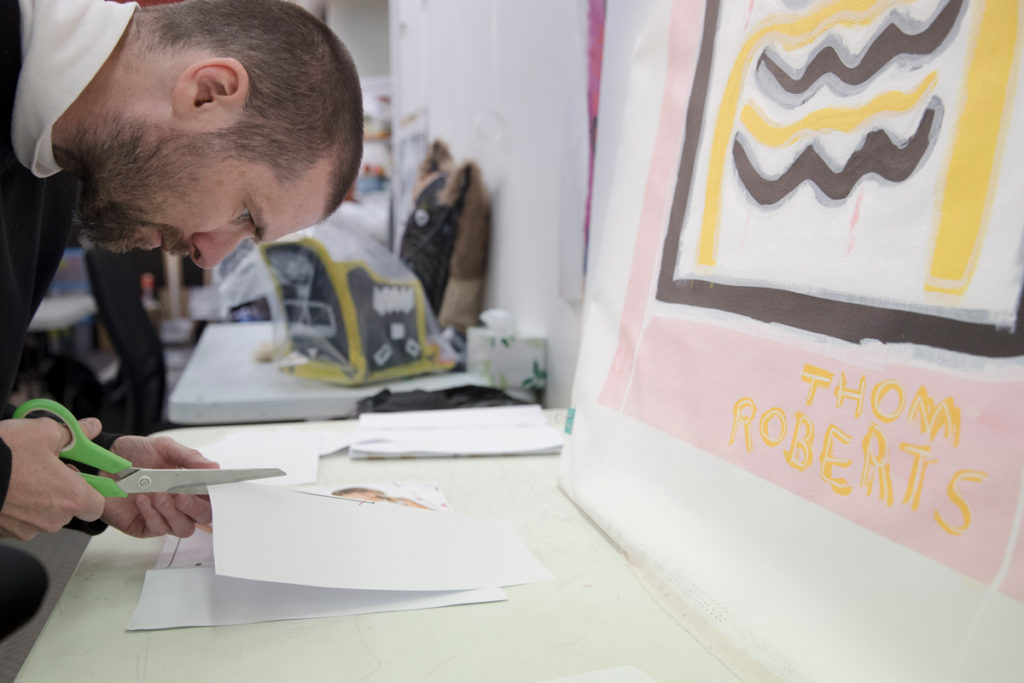
Them Roberts is ‘Monster’. Photography by Lyndal Irons
But to reduce the magic of the masks to tools to help the performers dip into character would be to overlook one of their most significant, if subconscious, effects. The masks don’t conceal the performers disabilities; they liberate the audience from the burden of viewing the work as a ‘disabled’ piece.
When Meagan Pelham is wearing her mask it becomes irrelevant that she has Downs’ syndrome; she is simply the woman in the wedding dress and the owl mask, rapping poems to the tune of death metal while she dances on the dining table.


